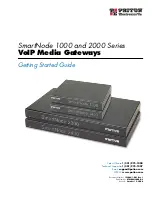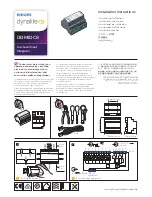
About This Document
Technical Assistance and Contacts
iv
OneWireless Multinode User's Guide
R110
6/08
Technical Assistance and Contacts
Honeywell has technical assistance centers worldwide. Contact the office at your location.
Location and Contact
Location and Contact
United States and Canada
Contact: Honeywell Solution Support Center
Phone: 1-800 822-7673.
In Arizona: 602-313-5558
Calls are answered by dispatcher between 6:00 am
and 4:00 pm Mountain Standard Time. Emergency
calls outside normal working hours are received by
an answering service and returned within one hour.
Facsimile: (602) 313-3293
Mail:
Honeywell TAC, MS P13
2500 West Union Hills Drive
Phoenix,
AZ,
85027
Singapore
Contact: Honeywell Global TAC -
South East Asia
Phone: +65-6580-3500
Facsimile: +65-6580-3501
+65-6445-3033
Mail:
Honeywell Private Limited
Honeywell
Building
17, Changi Business Park Central 1
Singapore
486073
Email:
Europe
Contact: Honeywell TAC-EMEA
Phone: +32-2-728-2732
Facsimile: +32-2-728-2696
Mail:
TAC-BE02
Hermes
Plaza
Hermeslaan,
1H
B-1831
Diegem,
Belgium
People’s Republic of China
Contact: Honeywell Global TAC - China
Phone: +86- 21-5257-4568
Mail:
Honeywell (China) Co., Ltd
33/F, Tower A, City Center, 100 Zunyi Rd.
Shanghai 200051, People’s Republic of China
Email:
Pacific
Contact: Honeywell Global TAC - Pacific
Phone: 1300-300-4822
(toll free within Australia)
+61-8-9362-9559 (outside Australia)
Facsimile: +61-8-9362-9564
Mail:
Honeywell Limited Australia
5 Kitchener Way
Burswood 6100, Western Australia
Email:
Taiwan
Contact: Honeywell Global TAC - Taiwan
Phone: +886- 7- 536-2567
Facsimile: +886-7-536-2039
Mail:
Honeywell Taiwan Ltd.
17F-1, No. 260, Jhongshan 2nd Road.
Cianjhen
District
Kaohsiung, Taiwan, ROC
Email:
Summary of Contents for OW-CDX050
Page 1: ...OneWireless Multinode User s Guide OW CDX050 R110 6 08 ...
Page 24: ...Agency compliance information R TTE Directive 12 OneWireless Multinode User s Guide R110 6 08 ...
Page 82: ...Configuration System Administration 70 OneWireless Multinode User s Guide R110 6 08 ...
Page 134: ...Honeywell International Process Solutions 2500 West Union Hills Phoenix AZ 85027 ...





































